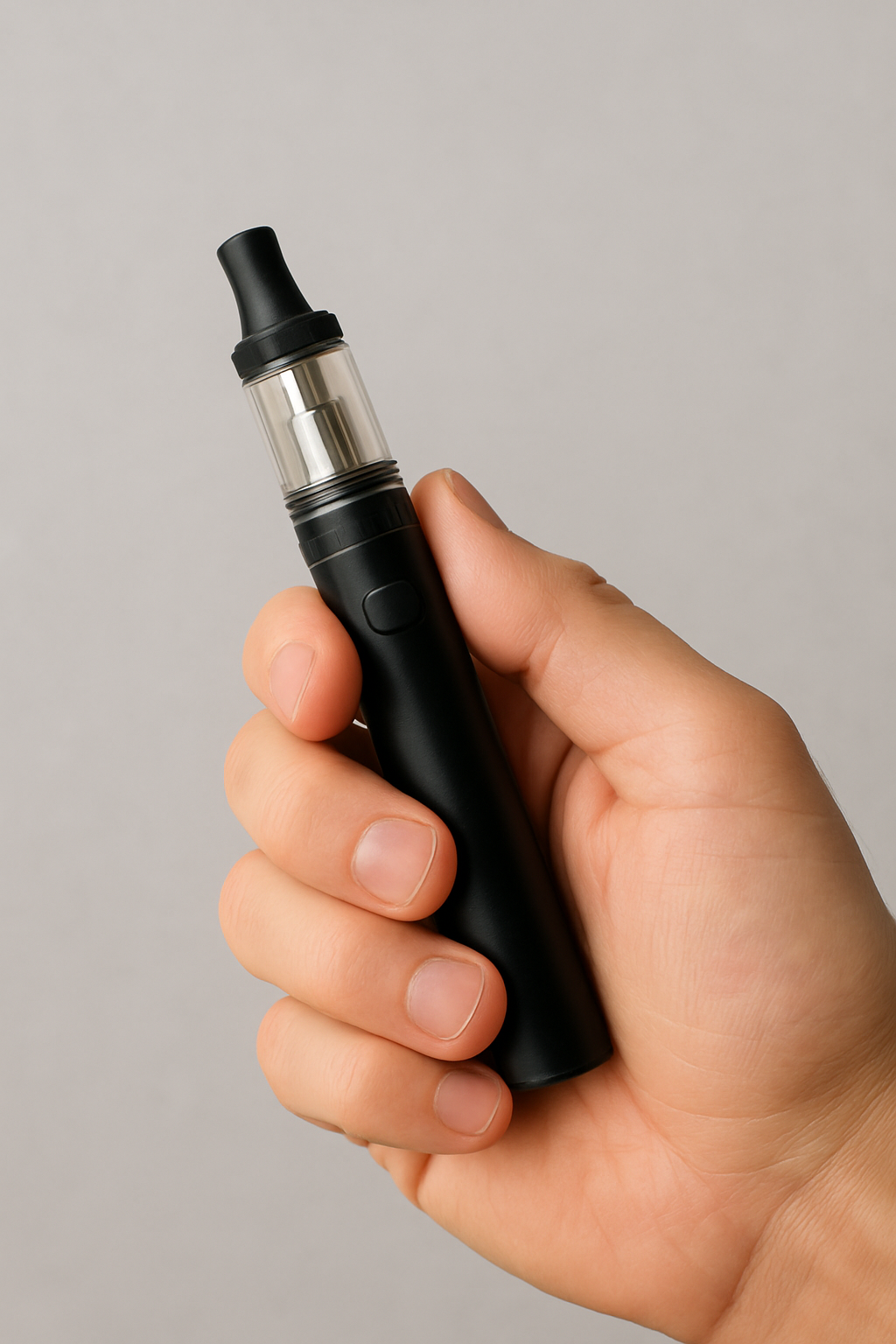
The rapid rise in the popularity of e-cigarettes, often marketed as safer alternatives to traditional tobacco products, has created new challenges for public health. While adults may use e-cigarettes as harm-reduction tools, the trend among children and adolescents is deeply concerning. Young people are drawn to vaping through appealing flavors, sleek designs, celebrity endorsements, and the perception of reduced risk. However, the reality is far more dangerous. The use of e-cigarettes poses significant physical, psychological, and social risks for children and adolescents.
This essay explores the health consequences, psychological and social implications, and long-term outcomes associated with e-cigarette use in this vulnerable age group. It also examines public health responses and provides an overview of recent statistical trends, emphasizing the urgent need for preventive measures.
Physical Health Risks of E-Cigarette Use
Although e-cigarettes were initially designed as alternatives for adult smokers, their chemical components and nicotine delivery pose serious dangers to developing bodies.
Nicotine addiction. Adolescents are more susceptible to nicotine dependence because their brains are still developing. Research from the National Institute on Drug Abuse (2022) shows that nicotine alters neural pathways related to learning and reward, making addiction more intense and longer-lasting when started early. Once addicted, adolescents often struggle to quit, leading to repeated cycles of withdrawal, cravings, and relapse.
Impact on brain development. Nicotine interferes with brain regions responsible for attention, learning, and impulse control. MRI studies have revealed structural changes in the prefrontal cortex among adolescents who vape regularly, raising concerns about long-term cognitive effects. Poor impulse control also correlates with higher rates of risky behaviors, compounding the harms of addiction.
Respiratory problems. The inhalation of aerosols exposes lungs to harmful substances such as formaldehyde, diacetyl (linked to “popcorn lung”), and heavy metals like nickel and lead. A 2020 outbreak of “EVALI” (E-cigarette or Vaping Associated Lung Injury) hospitalized over 2,800 individuals, many of them under 20. Symptoms included coughing, chest pain, and even respiratory failure.
Cardiovascular effects. Vaping increases heart rate and blood pressure and contributes to vascular inflammation. Early signs of cardiovascular disease are already being observed among adolescent vapers, with some studies indicating impaired endothelial function after even short-term exposure.
The perception that vaping is “safer” than smoking often blinds young people to these consequences. While e-cigarettes may eliminate combustion-related toxins, they introduce new risks uniquely harmful to developing bodies.
Psychological and Social Implications
The consequences of e-cigarette use extend beyond the physical. Adolescence is a critical period for social identity, emotional stability, and mental health. Vaping intersects with these dimensions in ways that amplify its harm.
Gateway to other substances. Studies consistently show that adolescents who vape are more likely to transition to traditional cigarettes, alcohol, or illicit drugs. A longitudinal study by the University of Southern California (2019) found that teens who used e-cigarettes were three times more likely to begin smoking conventional cigarettes within two years.
Mental health concerns. Nicotine use has been linked with higher rates of anxiety, depression, and mood disorders. Adolescents who vape may experience irritability, restlessness, and difficulty concentrating when deprived of nicotine. Surveys in 2022 indicated that adolescents who vape daily are nearly twice as likely to report symptoms of major depression compared to non-users.
Peer influence and social pressure. The normalization of vaping in schools reinforces the perception that it is harmless. Devices are sleek, easily hidden, and often shared in groups, creating strong peer pressure to experiment. Social media amplifies this trend, with influencers and viral videos portraying vaping as trendy and risk-free.
Academic consequences. Addiction and poor concentration hinder learning. Students who vape regularly report higher absenteeism, lower test scores, and increased disciplinary issues. Teachers have raised concerns about bathroom “vape breaks” disrupting classrooms, while schools struggle to monitor widespread use.
Together, these psychological and social effects extend the harm of vaping beyond individuals to families, schools, and communities.
Long-Term Outcomes and Public Health Concerns
The impact of adolescent vaping is not limited to immediate health or psychological harm. Long-term consequences represent a significant burden for public health systems and society at large.
Chronic diseases. Early nicotine exposure increases the risk of chronic respiratory conditions, cardiovascular disease, and potentially cancer due to chemical exposure. Because most vapers start young, these conditions may appear earlier and last longer than in past generations of smokers.
Healthcare costs. Rising cases of nicotine addiction and related conditions place financial pressure on healthcare systems. Treating vaping-related illnesses diverts resources from other critical needs, including preventive care.
Generational addiction cycles. Adolescents who become addicted may struggle with nicotine dependence for decades. This not only harms them but also perpetuates addiction within families, as children often model the behaviors of parents.
Policy challenges. Governments have attempted to respond with flavored product bans, advertising restrictions, and age-verification laws. However, enforcement is uneven. Online sales often bypass age restrictions, and counterfeit or unregulated products remain accessible. For example, despite the U.S. Food and Drug Administration banning many flavored pods in 2020, disposable flavored devices have surged in popularity.
Global trends. Similar patterns are emerging worldwide. In the UK, adolescent vaping nearly doubled between 2021 and 2023. Australia has moved toward a prescription-only model for nicotine vapes, while some Southeast Asian countries have banned them entirely. These varied responses underscore the complexity of regulating a rapidly evolving product.
Statistical Overview of Adolescent Vaping
The scope of the problem can be seen through recent data:
| Age Group | % Reporting Vaping in Past 30 Days (2023) | Most Common Flavors | Perception of Risk |
|---|---|---|---|
| Middle School (11–14) | 4.5% | Fruit, candy | 55% believe “not harmful” |
| High School (15–18) | 14.1% | Fruit, menthol, candy | 62% believe “less harmful than cigarettes” |
| College-age (18–21) | 22.0% | Menthol, fruit, dessert | 70% believe “not addictive” |
| High School (2015, for comparison) | 11.3% | Fruit, dessert | 43% believed vaping carried “little or no risk” |
Source: CDC, National Youth Tobacco Survey, 2023; CDC archived data, 2015.
The table illustrates two concerning trends: not only is vaping widespread among teens and young adults, but misperceptions about its risks remain alarmingly high. Compared to 2015, fewer adolescents today view vaping as harmful, even as evidence of its dangers grows.
Conclusion
The use of e-cigarettes among children and adolescents is a growing epidemic with devastating consequences. While marketed as safer alternatives for adult smokers, these devices expose young people to nicotine addiction, lung damage, mental health challenges, and long-term risks that can persist throughout life. The problem is not merely individual but societal, affecting schools, healthcare systems, and future generations.
Parents, educators, policymakers, and healthcare professionals must work together to increase awareness, regulate access, and create prevention programs that protect youth. Combating misinformation, restricting youth-targeted marketing, and reducing the social appeal of vaping are crucial steps. Schools and communities must implement prevention campaigns comparable to those used in anti-smoking efforts of past decades.
Ultimately, protecting the health and future of young people requires recognizing e-cigarette use not as a passing trend but as a preventable harm with life-altering consequences. By addressing the crisis now, society can safeguard the next generation from repeating the mistakes of the past.

